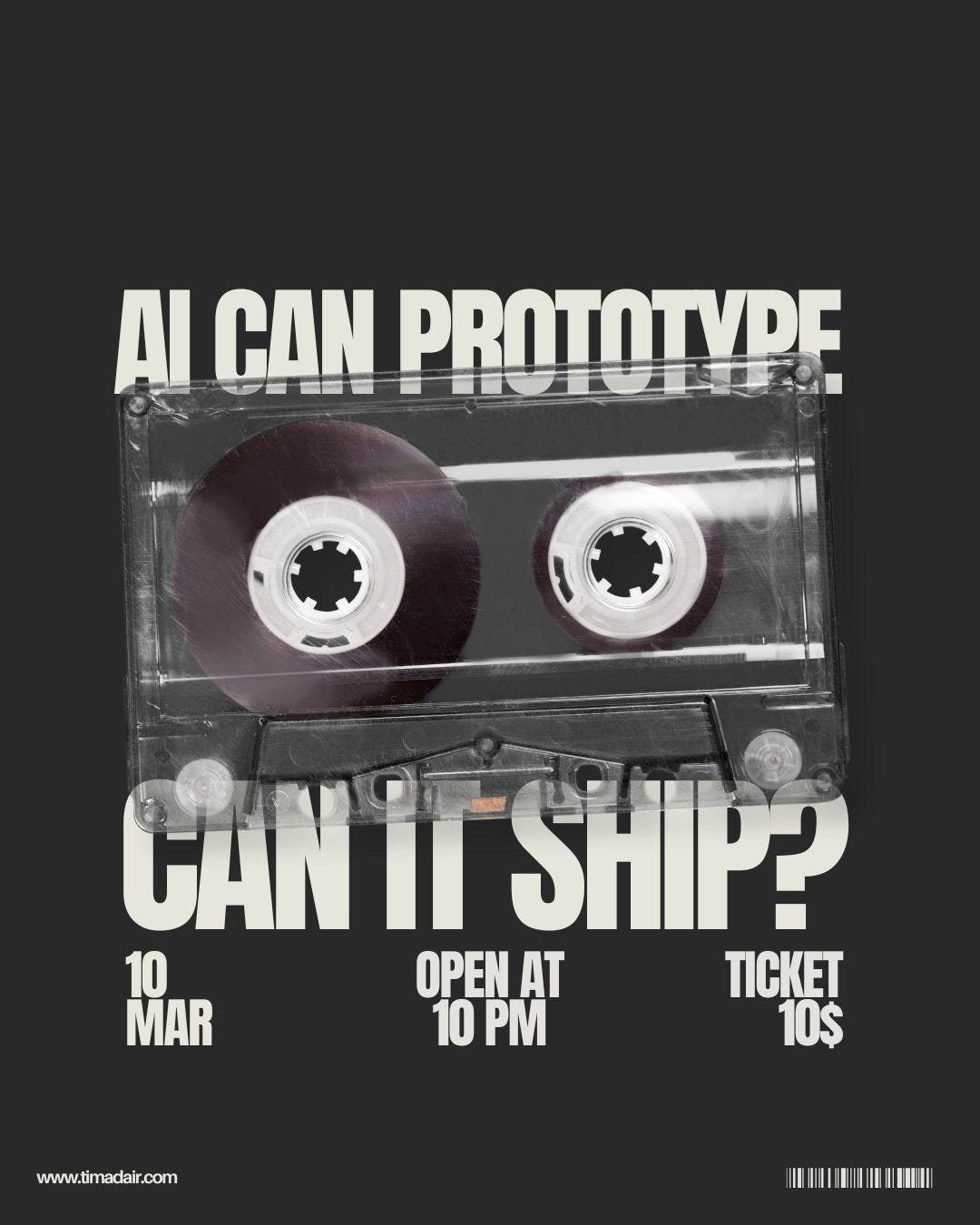AI Can Prototype, But Can It Ship?
PMs and designers bypass engineers and push features live with AI.
AI tools are reshaping how we build products, but how far can they really go? As a product leader, I’ve been thinking a lot about whether AI-generated prototypes can seamlessly transition into production-ready features. Can PMs and designers really bypass engineers and push features live with AI? Let’s dig in.
AI Can Prototype, But Can It Ship?
AI-driven prototyping tools—like Lovable, Cursor, and Replit—are game changers for product managers and designers. They help visualize ideas, generate code, and even build functional MVPs. But can those outputs go straight into production? Not really.
1️⃣ How Transferable Is AI-Generated Code?
It depends. Some tools generate high-quality code, but it still requires engineering intervention to clean up, ensure scalability, and integrate properly. Think of AI as an accelerator, not a replacement—it gets you 50-80% of the way there, but devs still need to refine the rest.
For example, AI-generated UI components might not align with your design system, and backend logic might lack security and performance optimizations. If your goal is a working prototype, AI delivers. If you need production-grade software? Engineers are still essential.
2️⃣ Can PMs & Designers Prototype Without Engineers?
Yes—at least in the early stages. AI allows non-technical teams to build low-code/no-code prototypes, get user feedback, and validate ideas before committing engineering resources. That’s a massive advantage.
Imagine you’re a PM at a startup. You have an idea for a new feature. Instead of waiting weeks for a sprint to free up, you spin up an interactive prototype in Lovable or Replit and get user feedback immediately. No dev hours wasted.
But does that mean PMs can ship features without engineers? Not at scale. The moment you need custom logic, security, integrations, or performance optimizations, developers need to step in.
🚀 Where Are We Headed?
We’re moving towards a future where:
✅ PMs and designers can prototype and validate ideas faster than ever.
✅ AI speeds up development but still requires human oversight.
✅ Engineers focus more on complex, high-value work rather than basic scaffolding.
AI isn’t replacing developers—it’s shifting their role. Instead of writing every line from scratch, they’re reviewing, refining, and optimizing AI-generated outputs.
💡 My Takeaway
If you’re a PM or founder, AI tools can help you ship prototypes at lightning speed, test ideas with users, and make smarter product bets. But to build scalable, production-ready features, you’ll still need engineering expertise.
I even tried Lovable myself to build a simple game—and the results were pretty amazing. AI helped me get a working prototype in minutes, but turning it into a polished product? That still required iteration and refinement.
🔹 What do you think? Will AI replace traditional prototyping and dev work, or is it just a fancy shortcut? Drop a comment—I’d love to hear your thoughts!



